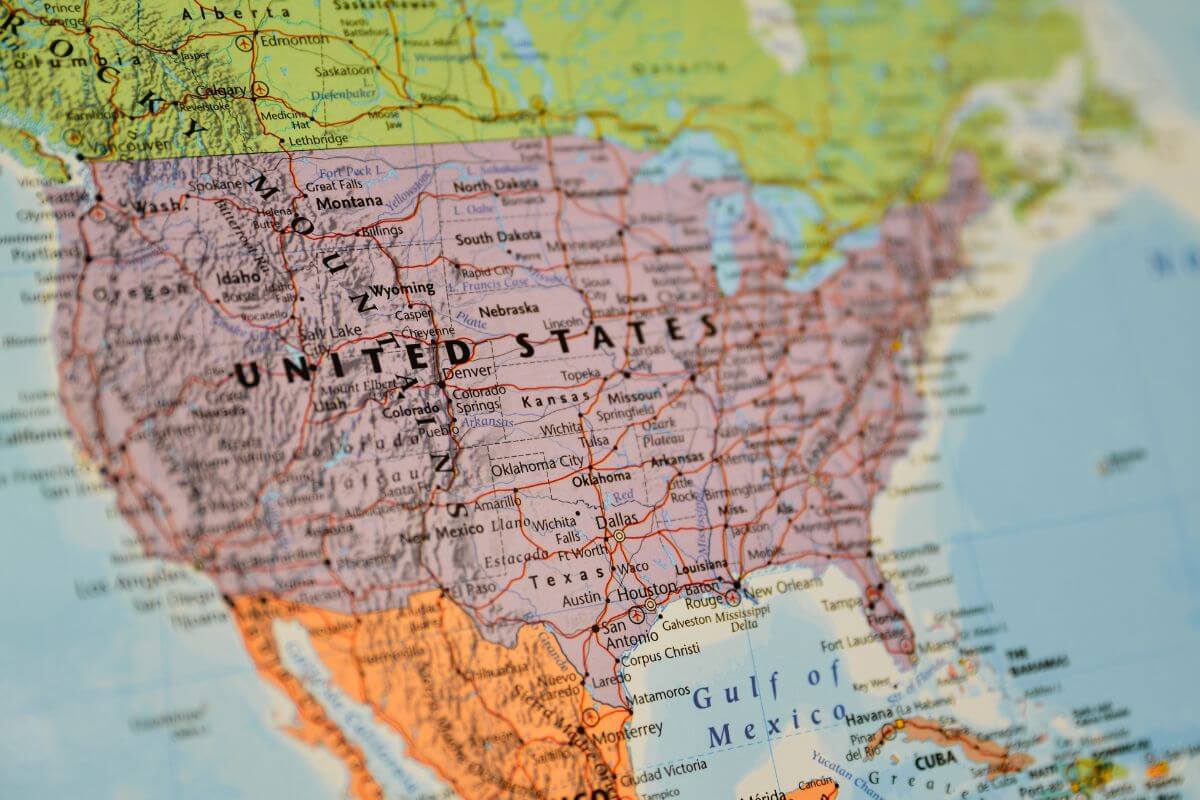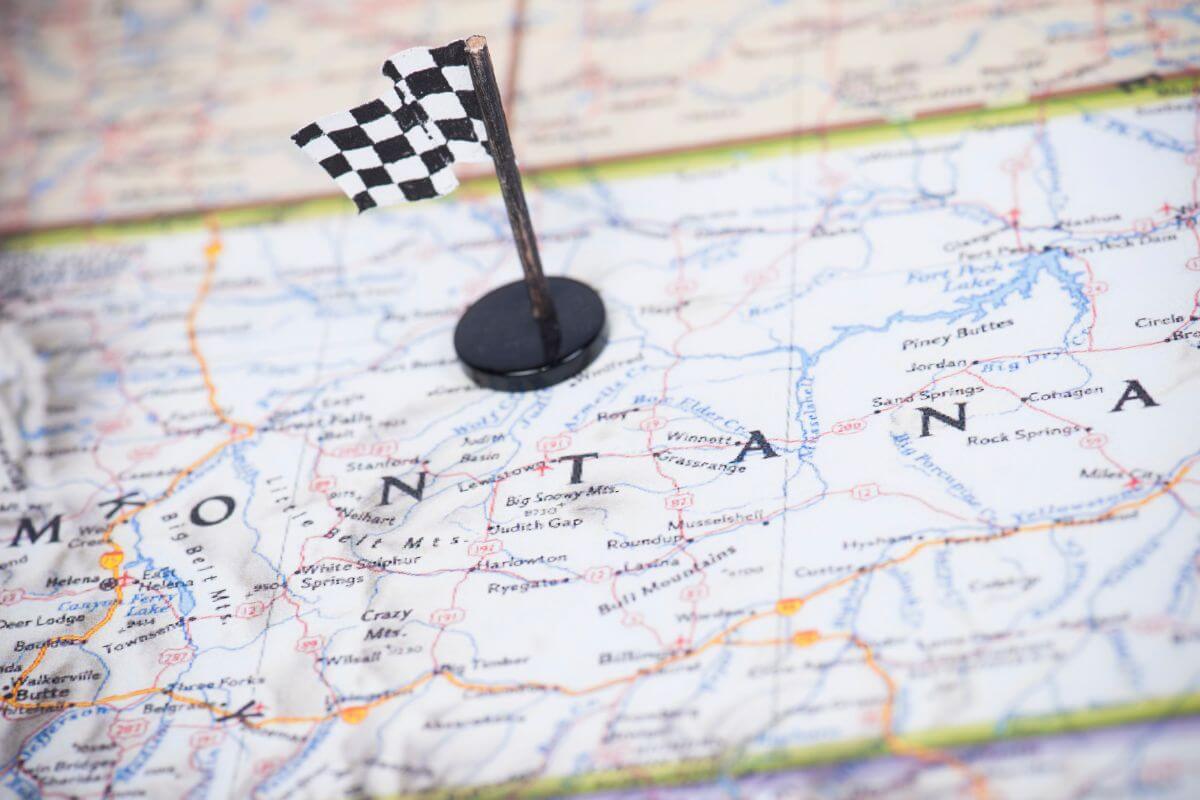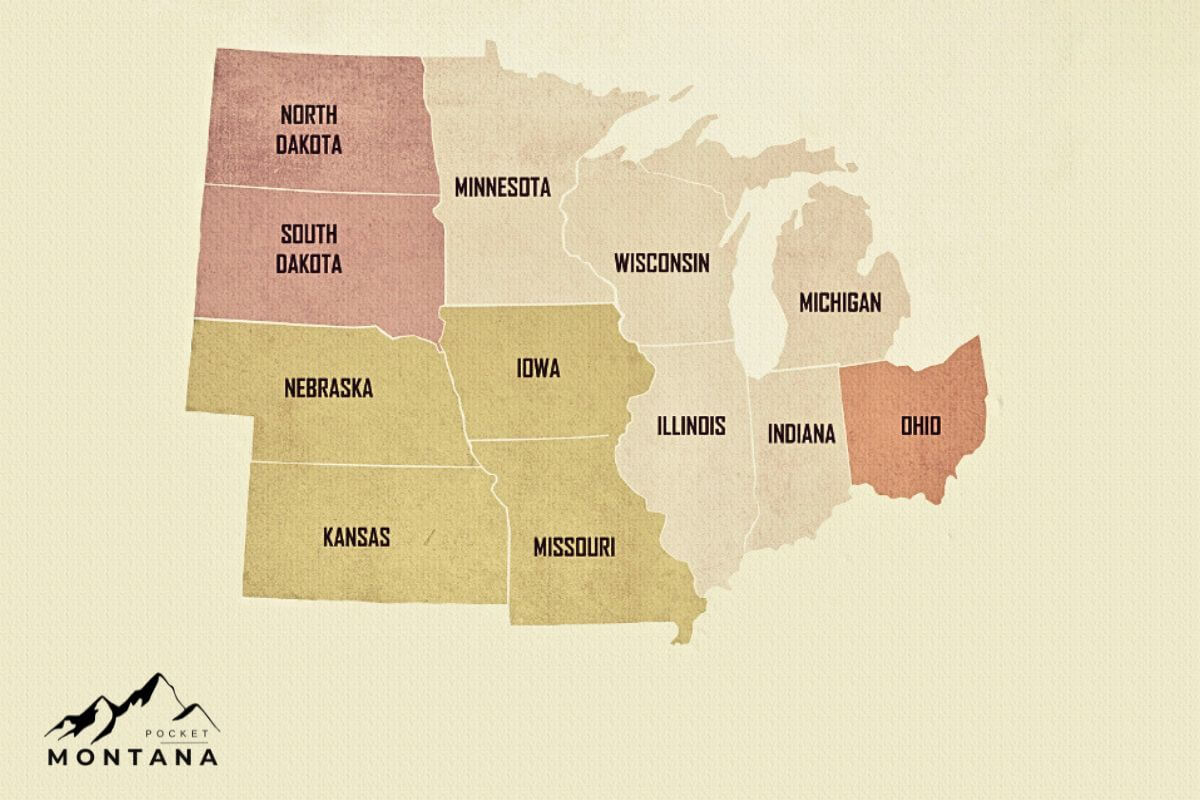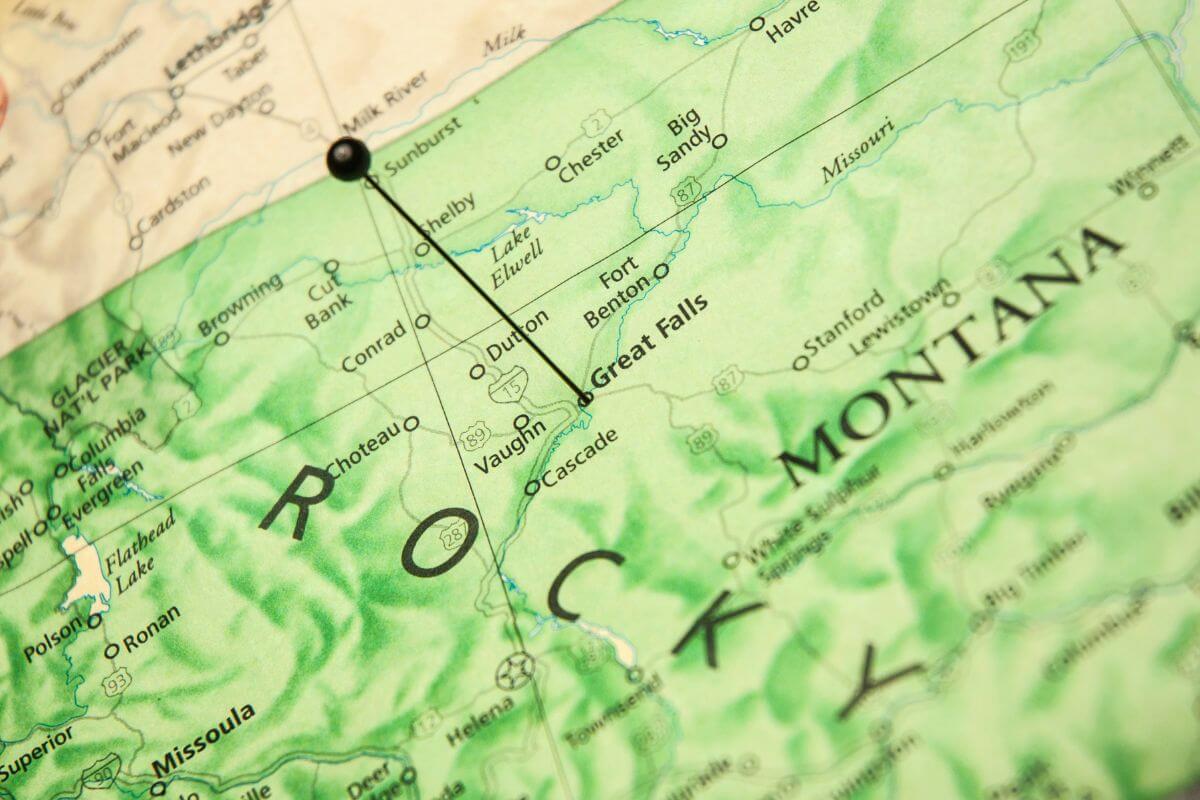Endless fields of corn swaying in the gentle Midwest breeze, iconic red barns dotting the landscape, and a sense of community ingrained in the very fabric of daily life. The image of the Midwest.
But is Montana Midwest? This question has sparked lively debates among geography enthusiasts and curious minds alike.
Does Montana fall within the Midwest region? Its unique blend of geography, history, and cultural influences has led many to question its classification.
Exploring the United States allows us to appreciate each region’s unique and captivating distinctions.
The vastness of the land led it to divide its country into regions showcasing the diverse landscapes, cultures, and identities that make it so fascinating.
So, who is this article for? Well, it’s for the curious souls, the seekers of knowledge, and those who revel in unraveling the complexities of our world.
It’s for the explorers and adventurers at heart, yearning to understand the intricate tapestry of our nation’s geographic regions.
- Related article: Locating Montana
Together, we’ll embark on a captivating journey to discover the truth behind Montana’s relationship with the Midwest. Let’s delve into this fascinating topic together.
U.S. Census Bureau Regions and Divisions

The Census Bureau’s regions and divisions are a geographical framework used for statistical purposes to group states based on their geographic proximity and similarities.
Identifying different states based on divisions and regions helps in data collection and analysis. It also helps in information dissemination.
The Bureau divides the country into four regions: Northeast, Midwest, South, and West.
1. Northeast Region
New England Division: Connecticut, Maine, Massachusetts, New Hampshire, Rhode Island, Vermont
Middle Atlantic Division: New Jersey, New York, Pennsylvania
2. Midwest Region
East North Central Division: Illinois, Indiana, Michigan, Ohio, Wisconsin
West North Central Division: Iowa, Kansas, Minnesota, Missouri, Nebraska, North Dakota, South Dakota
3. South Region
South Atlantic Division: Delaware, District of Columbia, Florida, Georgia, Maryland, North Carolina, South Carolina, Virginia, West Virginia
East South Central Division: Alabama, Kentucky, Mississippi, Tennessee
West South Central Division: Arkansas, Louisiana, Oklahoma, Texas.
4. West Region
Mountain Division: Arizona, Colorado, Idaho, Montana, Nevada, New Mexico, Utah, Wyoming.
Pacific Division: Alaska, California, Hawaii, Oregon, Washington.
The divisions and regions established by the Census Bureau are essential for various statistical purposes.
They allow for the comparison of data across states with similar characteristics and facilitate the identification of regional trends and patterns.
These geographic divisions enable policymakers, researchers, and businesses to understand and address specific regional needs and make informed decisions based on reliable statistical information.
Montana’s Geography: Is It Part of the Midwest?

When discussing the classification of Montana within the Midwest, it’s essential to understand the official definition provided by the U.S. Census Bureau.
According to the U.S. Census Bureau, the Midwest consists of 12 states: Illinois, Indiana, Iowa, Kansas, Michigan, Minnesota, Missouri, Nebraska, North Dakota, Ohio, South Dakota, and Wisconsin.
The Midwest is located in the north-central part of the United States. However, the term “Midwest” extends beyond its official boundaries and encompasses a broader cultural and social region.
Land-wise, the Midwest is a mosaic formed from territories acquired through the Northwest Ordinance of 1787 and the Louisiana Purchase of 1803.
Culturally, the Midwest is often regarded as the epitome of pure Americana, a pastoral place where life is simpler, and people are perceived as honest.
The Midwest is known by different names like the Great Plains, the Heartland, and the Breadbasket, which bring to mind a peaceful and rural scenery.
People from this region are often portrayed as diligent, sincere Americans who are courteous, amiable, and maybe a little unsuspecting.
This view is further supported by popular culture, where characters like Dorothy, Aunt Em, and Uncle Henry from L. Frank Baum’s stories are linked to this stereotype.
While Montana’s geographical location places it outside the officially defined Midwest, exploring its history, cultural influences, and unique blend of landscapes makes for a captivating study.
Its vast plains, majestic mountains, and rich Native American heritage contribute to the distinctive identity that sets it apart from the traditional Midwest region.
Montana Excluded From the Midwest

Montana is not considered a Midwestern state for several reasons:
- Located in the Northwest – Montana is part of the northwest region of the United States, far from the central region typically associated with the Midwest.
- Bordered by Non-Midwest States – It is bordered by states like Idaho and Wyoming, which are not traditionally considered part of the Midwest either. Montana has a different historical and cultural background compared to the Midwest.
- Rocky Mountain Influence – It has a strong influence from the Rocky Mountains and a history tied to mining, logging, and ranching. The Midwest, on the other hand, has a more agricultural and industrial heritage.
- Part of the West – Montana is classified as part of the West, which includes states with similar landscapes, cultures, and identities while the Midwest is a separate area with different characteristics.
Montana may share similarities with the Midwest in North America, but it doesn’t qualify as part of the Midwest due to its distinct geography, historical and cultural differences, and regional identity.
The 12 Midwestern States

The 12 Midwestern states officially recognized by the U.S. Census Bureau are divided into two geographic divisions: the East North Central division and the West North Central division.
The East North Central division includes Illinois, Indiana, Michigan, Ohio, and Wisconsin. The West North Central division comprises Iowa, Kansas, Minnesota, Missouri, Nebraska, North Dakota, and South Dakota.
These states constitute the Midwest, which is one of the four census regions recognized by the Bureau and known for its diverse landscapes, including vast plains, rolling hills, and dense forests.
The other census regions are the Northeast, South, and West.
Midwest is located in the northern central part of the United States, bordered by the Great Lakes to the northeast and the Mississippi River to the west.
This region is characterized by its rich agricultural heritage, with states like Iowa and Kansas known as the Corn Belt. States like Nebraska and North Dakota formed the Wheat Belt.
The Midwest is home to vibrant urban centers and bustling cities like Chicago in Illinois and Minneapolis in Minnesota known for their cultural events, world-class museums, and thriving economies.
Is Montana Part of the Midwest Final Thoughts

Montana’s geographical location, historical background, and cultural identity exclude it from being classified as part of the Midwest.
The Midwest is known for its specific states and is often associated with an agrarian landscape and cultural stereotypes.
However, Montana stands out because of its unique geography, being categorized as part of the Western region, and having a diverse combination of landscapes.
Geographically, Montana is situated in the western part of North America, while the Midwest is more centrally located.
The Rocky Mountain region dominates Montana’s landscape, while the Midwest consists of vast plains.
Culturally, Montana has a different cultural heritage and identity. It is known for its rich Native American history, cowboy culture, and outdoor recreational activities like hiking and fishing.
On the other hand, the Midwest is associated with agricultural traditions, industrial heritage, and Midwest hospitality.
Montana’s placement in the Rocky Mountain region and its cultural and geographical differences from the Midwest make it clear that Montana is not part of the Midwest.
Is Montana Part of the Midwest FAQs
1. Is Montana in the Midwest?
No, Montana is not in the Midwest. It is located in the northwestern part of the United States, specifically in the Rocky Mountains, North America.
The Midwest refers to the north-central part of the country, and Montana is not included in this region.
2. What Is Considered the Midwest?
The Midwest region, as defined by the U.S. Census Bureau, is a regional division in the northern central part of the United States.
It includes twelve states: Illinois, Indiana, Michigan, Ohio, Wisconsin, Iowa, Kansas, Minnesota, Missouri, Nebraska, North Dakota, and South Dakota.
3. What Is Montana’s Placement Within the United States?
Montana is a state located in the Northern Rockies and Plains region of the United States. While it is not considered part of the Midwest region, it is still geographically situated in the central part of the country.
As one of the Northern Rockies and Plains states, Montana boasts stunning natural landscapes, including the Rocky Mountains range, prairies, and the iconic Yellowstone National Park.
4. Why Do They Call It the Midwest?
The term “Midwest” originated in the early 19th century as the United States expanded westward.
At that time, the region was considered the western frontier, lying between the eastern settled areas and the far western territories.
As more territories were added to the country, the region became known as the “Middle West” or “Midwest.”
5. Is Montana Considered the Wild West?
Yes, Montana is considered to be part of the Wild West. Montana’s origins as a historical frontier territory and its association with the label of the Wild West make it a key component of this classification.
While Montana is geographically located in the Midwest region of the U.S., its historical and cultural ties to the Wild West contribute to its association with that era.
If you’re eager to explore and learn more about Montana, here are some engaging articles that will broaden your knowledge:
- Montana’s Dry Wilderness
- Montana’s Land Borders
- Montana’s Connection to Canada
- Montana’s Connection to the Great Plains
- https://www.census.gov/programs-surveys/popest/about/glossary/geo-terms.html
- https://openscholarship.wustl.edu/cgi/viewcontent.cgi?article=1455&context=etd
- http://websites.umich.edu/~eng217/student_projects/michiganfarm/midwestern_life.htm
- https://www.census.gov/programs-surveys/economic-census/guidance-geographies/levels.html
- https://www2.census.gov/geo/pdfs/maps-data/maps/reference/us_regdiv.pdf
- https://www.nps.gov/gis/documents/nps_regions_11x8-5-new.pdf

